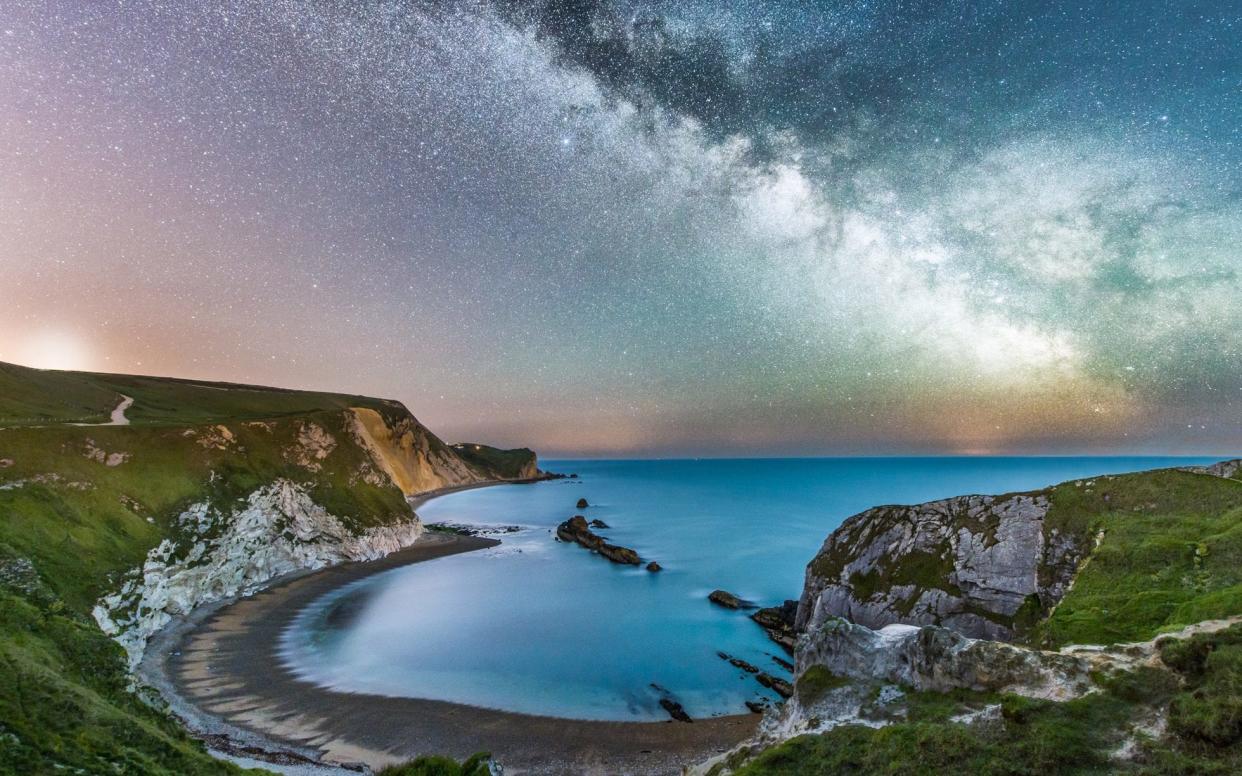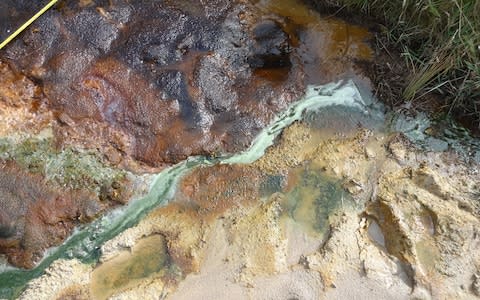Why scientists are hunting for Martians at Lulworth Cove in Dorset

The serene shores of Lulworth Cove in Dorset may not seem the obvious place to hunt for alien life.
But scientists at Imperial College have discovered that the highly-acidic sulphur streams and pools which surround St Oswald’s Bay perfectly mimic conditions on Mars billions of years ago.
And the hardy organisms which live there could give a hint about the kind of life which may have evolved on the Red Planet, and where to look for it.
Crucially researchers found traces of fatty acids, the key building blocks of biological cells, in the streams as well as living and fossilised microbes in the nearby rock deposits.
When they applied their findings to the Martian environment, they concluded that there could be the equivalent of nearly 12,000 Olympic-sized pools of organic matter on Mars that could be the broken down remains of past life.
Co-author Professor Mark Sephton, Head of Imperial’s Department of Earth Science & Engineering, said: “Mars harboured water billions of years ago, meaning some form of life might have thrived there.
“If life existed before the water dried up, it would probably have left remains that are preserved to this day in Martian rock.
“However, we have yet to find convincing traces of organic matter that would indicate previous life on the Red Planet.”

Mars is thought to be one of the best chances of finding evidence of extra-terrestrial life in the solar system because it once had an atmosphere and liquid water.
There have been tantalising hints that life may exist on Mars, but so far no concrete proof. In 2014 Nasa’s Curiosity rover recorded intriguing ‘burps’ of methane.
On Earth, around 90 per cent of methane is produced by living organisms, so the expectation was that some kind of life is also emitting the gas on Mars. And methane vanishes on Mars after a few hundred years so it must have been produced in the recent past.
The following year the rover also took pictures of ancient sedimentary rocks which contained structures similar to those shaped by microbes on Earth.
However last year the University of Edinburgh discovered that certain minerals called perchlorates present on the surface of Mars are deadly to bacteria.
But the new study proves that life can survive and thrive in even the most hostile environments.
The geology around St Oswald’s Bay is perfect for studying life on Mars because it contains large amounts of the iron-rich mineral goethite which transforms into hematite - the mineral which makes the Red Planet red.

The researchers were keen to see if those iron-rich minerals harboured traces of life, as it would hold clues to past microbial life on Mars.
Previous missions to find traces of life have used heat to inspect rock for the presence of organic matter.
But scientists suspect the heat might have caused minerals to react with any organic matter, explaining why we haven’t yet found traces of life.
However, heating goethite or hematite does not destroy any organic matter that’s there, meaning these minerals could be good life-search targets.
Co-author Jonathan Tan, also from the Department of Earth Science & Engineering, said: “St Oswald’s Bay is a present-day microcosm of middle-aged Mars.
“As the acid streams dry up, like during Mars’ ‘drying period’, they leave goethite minerals behind which preserve fatty acids that act as biological signatures.”
Professor Sephton added: “Now we should let Dorset’s landscape guide our life detection efforts on the Red Planet.”
The authors say that if we do find traces of life, it will probably be in the form bacteria that can thrive in extreme environments - like the acid streams on Earth.
They hope to programme the next life-searching mission to Mars, Mars 2020, to search for these dried up streams and inspect the sediment for traces of fatty acids.

 Yahoo News
Yahoo News 
